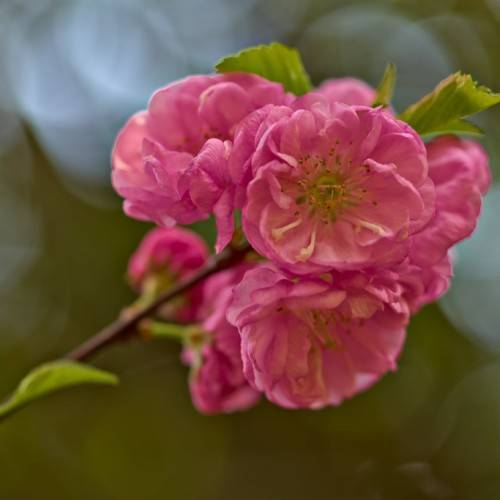
flowering almond
Prunus triloba
Cycle:
Perennial
Watering:
Average
Hardiness Zone:
3 - 7
Flowers:
Flowers In Spring
Sun:
Full sun,part shade
Fruits:
Fruits Ready In Fall
Leaf:
Yes
Growth Rate:
Low
Maintenance:
Moderate
Poisonous To Pets:
Yes
Thorny:
Yes
Invasive:
Yes
Care Level:
Medium
watering
Water Flowering almond (Prunus triloba) about once a week, ensuring that the soil is moist but not soggy. Water deeply to penetrate the lower root levels where the majority of the root system lies. During hotter, drier weather, water more frequently to compensate for the higher evaporation. Too little or too much water can cause leaf drop and damage the health of the plant.
sunlight
Flowering almond (Prunus triloba) requires full sun to thrive well. While the plant is very tolerant of shade, it will produce the most flowers in areas with 6 or more hours of direct sunlight per day. When grown in partial shade, flowering almond will still produce some flowers, but they will be fewer in number. Flowering almond may benefit from some afternoon shade in particularly hot climates or times of the year. For best results, keep the plant in a location that receives full sun in the morning and light shade in the afternoon.
pruning
Flowering almond plants (Prunus triloba) should be pruned from late winter to early spring, just before growth begins. When pruning flowering almond shrubs, you should remove old, weak, or dead branches and trim back shoots and branches that have grown too long. It is also important to selectively prune flowering almond plants to promote dense foliage and even distribution of the flowering blooms. To do this, you should cut back evenly and remove any crossed or competing branches. Pruning flowering almond plants should also be done to encourage the growth of new branches and shoots for the upcoming year. With careful, selective pruning, flowering almond plants will produce abundant blooms and lush foliage each spring.
